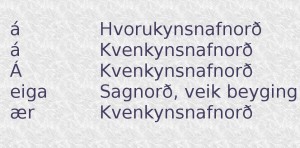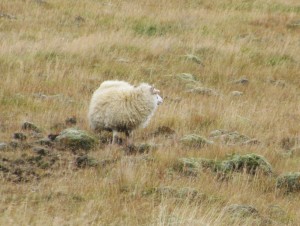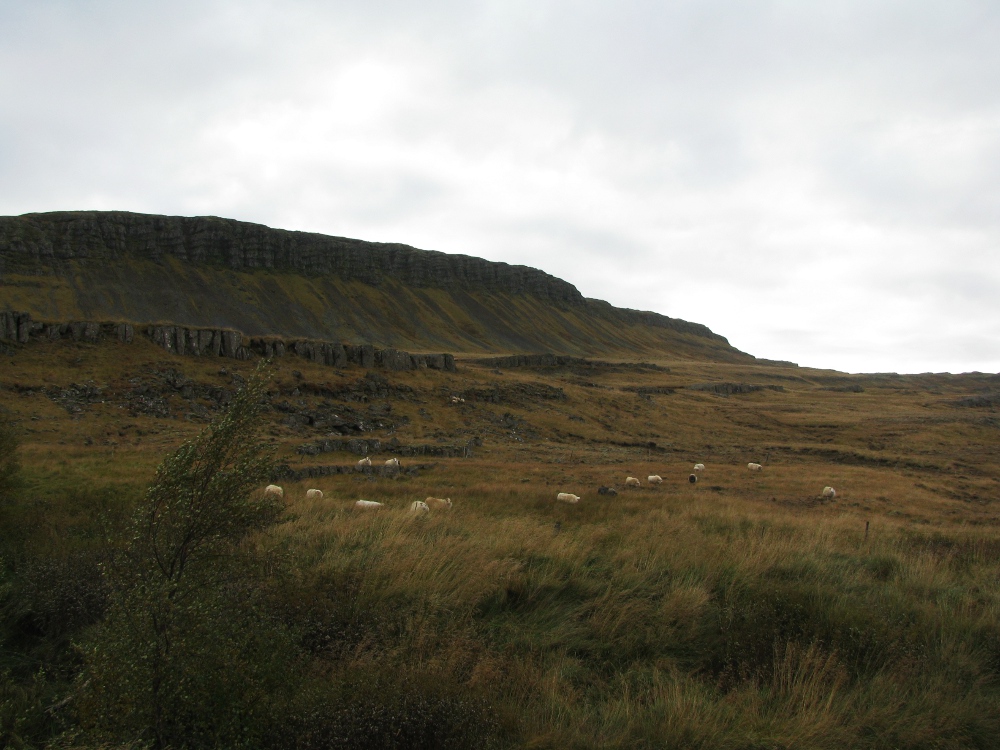A sheep by any other name… Posted by hulda on Oct 8, 2013 in Icelandic culture, Icelandic grammar
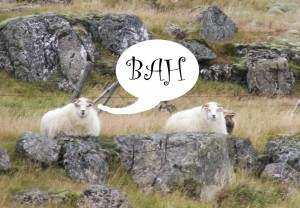 Afi á Á á á á á is a perfect example of the dangers of speaking Icelandic; it has a good selection of both homophones and homonyms. Homophones, words that are written differently but pronounced almost or exactly the same will become a challenge when you speak, homonyms such as á that are spelled and pronounced the same will haunt you into the writing part as well. Let me scare you further – here’s an earlier blog post with words that have rude/sexy homophones!
Afi á Á á á á á is a perfect example of the dangers of speaking Icelandic; it has a good selection of both homophones and homonyms. Homophones, words that are written differently but pronounced almost or exactly the same will become a challenge when you speak, homonyms such as á that are spelled and pronounced the same will haunt you into the writing part as well. Let me scare you further – here’s an earlier blog post with words that have rude/sexy homophones!
If you check the afi á Á á á á á (= grandpa from Á has a sheep by a river) example with a dictionary, however, you’ll be greeted by a surprise: only two of them are listed. This is because dictionaries only state the nefnifall (= nominative) form of the word and Icelandic is a highly inflected language.* A great way of finding out whether or not an Icelandic word has homonyms is by going to BIN (link), typing it into the search box and then ticking the box underneath it. Remember to spell the word correctly with accents included or the search machine will become confused (it’s always better if at least one side knows what’s going on). 😉
This is how it should look like.
Once you do a search with the inflections option turned on you’ll get an entirely different outcome than the one your dictionary would have been able to give you. By searching á you’ll get five results altogether and only three of them have a nefnifall form á!
In fact, this list does not even include the preposition á (= on, in, at, by, from), or the á that’s used as an exclamation: Á, er það satt? (= Oh, is that true?) Starting from the top of the above word list, let’s break “Afi á Á á á á á” into which á means what:
á (neutr.); I didn’t find an explanation on what this one means, but my guess is that it means the letter á – it doesn’t appear in the tongue twister.
á (fem.); A river.
Á (fem.); written with a capital letter, so it’s a name. BIN tells you if a name belongs to the first names group, which this one doesn’t so it has to be a place name.
eiga (verb, weak declension); to own, to must. 1st and 3rd person singular forms are both á (ég á, þú átt, hann á, við eigum, þið eigið, pau eiga).
ær (fem.); a sheep. The þolfall (= accusative) and þágufall (= dative) forms are both á.
Therefore Afi (= grandpa) á (from) Á (a place called Á) á (owns) á (a sheep) á (at, on, by) á (a river).
“Á, áttu á?”
The most common homonyms are names that have a meaning, such as f.ex. Björn/björn (= bear). Don’t think for a moment though that you could always use them the same way – their declension may be different. The genitive form of björn is always bjarnar, but the genitive form of Björn can also be Björns. Names in Icelandic don’t have plural forms so if you say birnir you’re most definitely talking about animals. Some names have their homonym from an entirely different word group, such as Gerður/gerður, where gerður is an adjective and therefore the declension is entirely different:
To make matters even more confusing there are names that are very nearly antonymous to their homonym: the adjective ljótur means ugly, but Ljótur as a name means fair/bright. The name’s fallen completely out of use and would today be considered unacceptable for a child, which is probably for the best. 😉
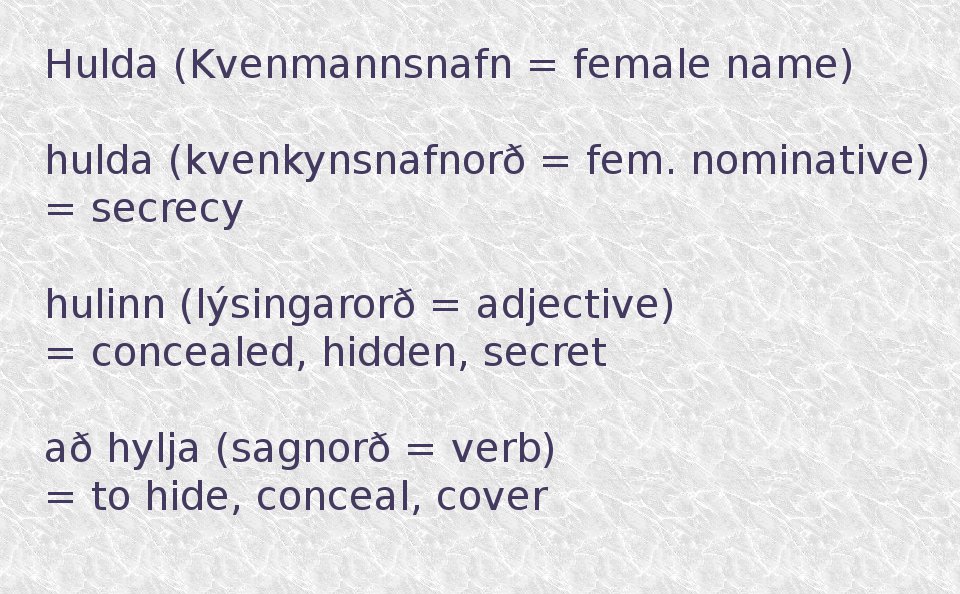
Out of sheer curiousity I also tried writing Hulda in the BIN search box. I was expecting three hits – Hulda (= female name), hulda (fem. nom.) and hulinn (adj.) – but BIN decided to reward me with one extra bonus, hylja (verb)! In the latter two the form “hulda” can be found in the declensions. Another point – don’t confuse Hulda with the name Huld: the genitive for Hulda is Hulds, for Huld it’s Huldar. That’s how you can tell f.ex. that the main character of the book “Bókasafn ömmu Huldar” by Þórarinn Leifsson is called Huld, not Hulda. 🙂
“Áttu áttatíu ær á á?” – “Nei, þær eru á fjalli!”
“Do you have eighty sheep at a river?” – “No, they are on a mountain!”
Two more examples of Icelandic homonyms. You can try making your own if you like – just go to BIN, pick a word and see how many homonyms it has for you to play with!
*Be glad that you’re not studying Old Norse instead of Icelandic, it’s even worse.**
**In case you actually are studying Old Norse, godspeed.

Build vocabulary, practice pronunciation, and more with Transparent Language Online. Available anytime, anywhere, on any device.
About the Author: hulda
Hi, I'm Hulda, originally Finnish but now living in the suburbs of Reykjavík. I'm here to help you in any way I can if you're considering learning Icelandic. Nice to meet you!




